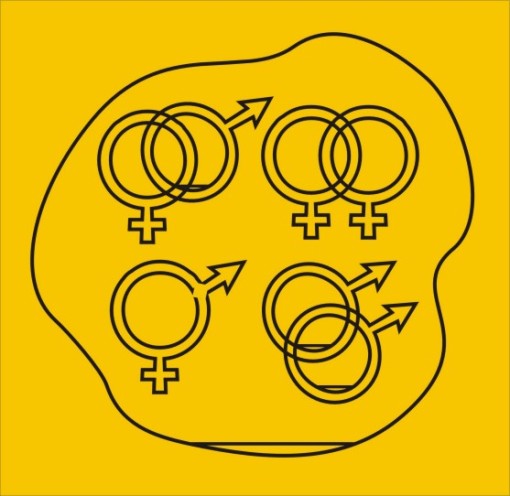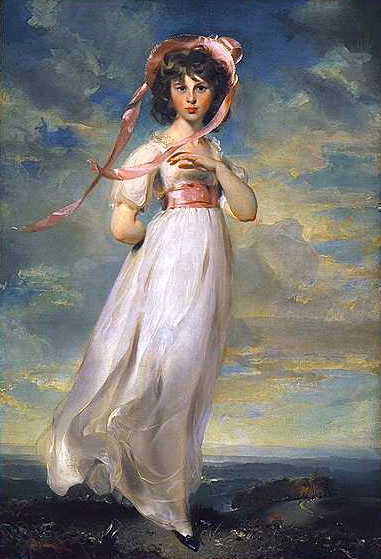Gender, Sexual Orientation and what it is to be transgendered.
Shortly after birth we are placed by the people who love us – our parents (or less loving medical staff; when there is some question), into either a BLUE or PINK box. Repeat after me, we are placed into onlyone of two boxes, early on – and that choice is made simply by the visual inspection of genitalia. If you have an inny, you get the pink box; and outy gets you the blue one; if you are in some question, they try to assign one of the boxes, only.
That is social gender assignment, based on whether you have a penis or a vagina only. It is as simple as that and has been done that way for a long, long time and is done throughout the world like that. As a infant child, it is relatively easy to be in one box or another – it really makes little real difference in the early stages. You will be treated different, based on the culture and time you are raised in. There was a time when boys wore pink… but that is another story.
Some gender stuff happens around 6-10 years of age, mostly you form the concept of what adult relationships look like and you will likely follow those patterns as an adult. At this time, you might wander a little away from your box colour – but not too far! Girls playing only with Lego and cars are still not really that far from the pink box – most often they took toys (tools) from the blue box but still play with them in decidedly “pink” ways. Same goes for boys – they may play with toys from the pink box, but they play with them in a “blue” fashion.
Now for the big explosion – and where the waters get muddy for most mainstream people. This individual growth takes place around 10 to 16 years of age as we are figuring out sex, the changing body that you have and where you fit into the world with your forming identity. There, I said the word, sex, because that word (and all that goes with it) causes all the confusion when gender is brought up. The muddiness comes in here because we tie sex to everything. So it is at this time, from when you are 10-16 years old, that the individual often deals with experimentation and self discovery while we look at the new options (or they “present” themselves to us).
So here are your variables, the options of what to think after you start figuring it out – the options that you have placed by society before you as a teenager.
Gender – We will be coming back to this one:
You are in either a Blue or Pink box, based on social assignment at birth based upon genitalia. Boys are in Blue boxes, Girls are in Pink boxes. This one is simple and we use it to figure out the next thing.

Sexual Orientation - and Gender
Attracted to which box?
This is Sexual Orientation:
Heterosexual:
If you are in a Blue box, you need to be sexually attracted to people only in the Pink box. If you are in a Pink box, you need to be sexually attracted to the people only in the BlueBox. – this is the social “norm”, it is what the bulk of the population does. You can play with toys from either box BUT not too much or too far, because of this other bit of sexual orientation, called (dun,dun,daaaaa);
Homosexual:
If you are in the Blue box and you are attracted to people only in the Blue Box, you are Gay. If you are in the Pink box and are only attracted to people in the Pink Box, you are Lesbian.
Bisexual:
Okay, if you are in one box and are attracted to people in either box, you are said to be Bi. Mostly it is the person being attracted to both boxes that says they are Bi – the other orientations often label you as indecisive. Others label this as a sexual person because they are attracted to both sexes.
That pretty much covers the normal combinations.
Ok, that is the part they the audience “gets”, nodding all the way. They know all this because it is taught to us young, as we are in our teens. I will not really get into the social prejudices. That covers the easy to understand sexual orientation part – but what about Gender?
The confusion comes in with understanding Gender (the box you are in) and what you are doing with the other box, the box that you were not assigned to after birth. This is not about sex, it is not about having sex, it is not about who you have sex with – refer to back sexual orientation to understand that.
Transgender
Gender transformer (more than meets the eye);
Gender has to do with the box you are assigned to and with the which one you feel you belong in – and the conflict or agreement of those two. The thing that adds more confusion here is that Gender is a sliding scale, with a break point being, with most people, at the first question they ask; “Do you still have your blue box parts or did you remove you pink box parts.” With gender movement, leaving your box and heading towards the other is not always a destination of being in the other box. The open field that is between those boxes is huge and populated with all sorts of people – people you know and meet every day. I am one of those people – but those who get close always ask me about whether or not I have my boy part…
Gender and the Sliding Scale:
If you are in a Pink box person, and are a welder, dress masculine, drive a pickup – you are often thought of as a “dyke” (note, that label is about sexual orientation, not gender). Being in a Pink box, but incorporating too many things from the Blue box is confusing for many – they make it simple by referring back to sexual orientation. If you are in the Blue box, artistic, soft spoken – well you see where this is going. If you dress in the clothes of the other box, you cause the same confusion for the social group at large – and they often then assigned you a sexual orientation label. If you play with too many things from the box of the other color, people refer to sexual orientation, first.
And for the record and some humor – a kilt is never a skirt.
Moving out of your Blue box, leaving the box you were assigned, while playing with the toys in the Pink box is hard for most people to grasp. You are not supposed to “over play” with the toys from the other box AND you are certainly not supposed to leave your box to play with toys from the other box! Once again, I keep it to extremes to help people understand – but the truth is, TG’s are often somewhere in the open are between the two boxes and that is where we find the bulk of Transgender people. True Transexuals; ones who complete the departure from one box and are solidly in the other box – they often disappear into their new box, never wanting to be outed.
So, that brings us to Gender. When you start to leave behind your box later in life, the box you were assigned to so shortly after birth, you are breaking socially established norms, centuries old. Now, keep this in mind Gender is not Sex or Sexual Orientation. If a person chooses to leave their Blue or Pink box, move into the other box and adopt all that is necessary to be in that box – they are in the new gender.
So now what is a persons Gender if you were raised in a Blue box and move to the Pink box? – well, it comes down to the first question I usually get asked. It is what we think makes the person a Blue or Pink, a penis or vagina.
So next time you see someone who you are thinking assigning a sexual orientation label to, you might just be looking at a gender slider, transgender, TG, TV, CD, androgyne, gender transformer (my son coined that one), intergender, genderqueer. This sliding scale is what makes it such a varied social dynamic and what makes it hard to cleanly label and for the people in their own strict boxes to understand.


